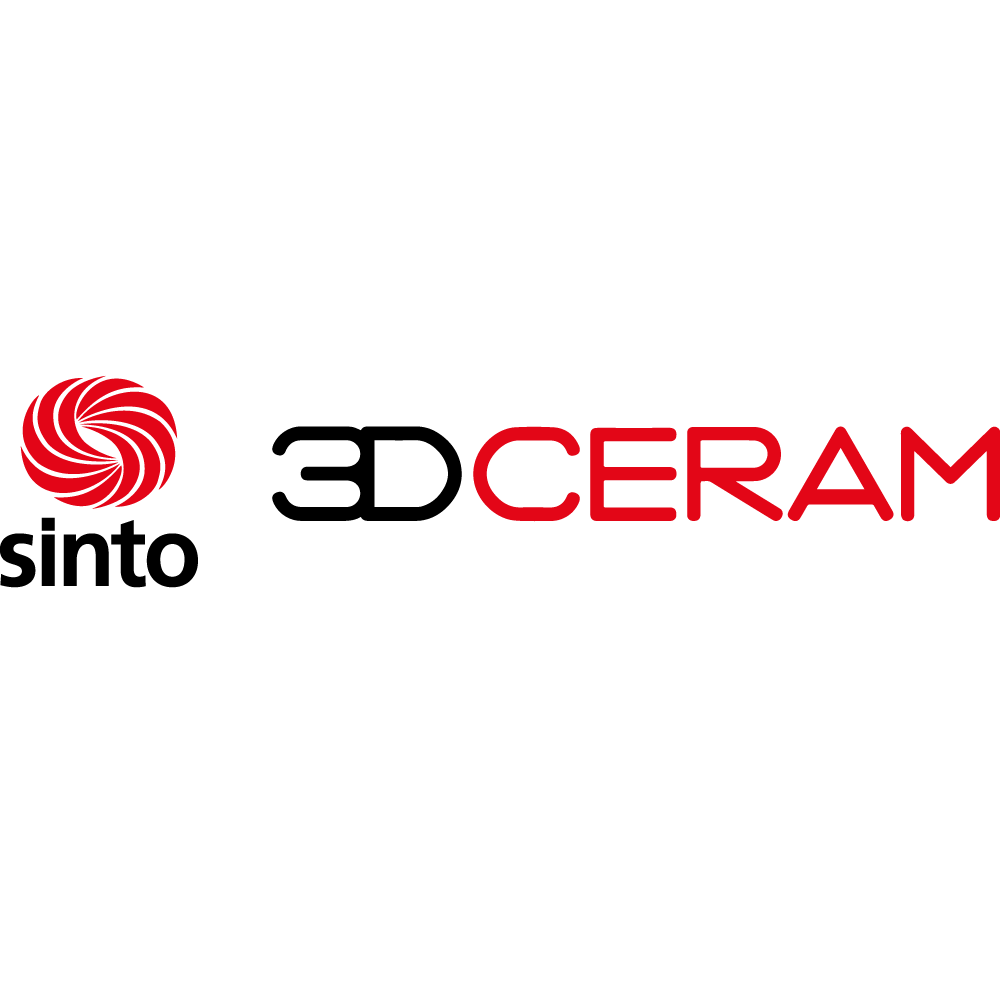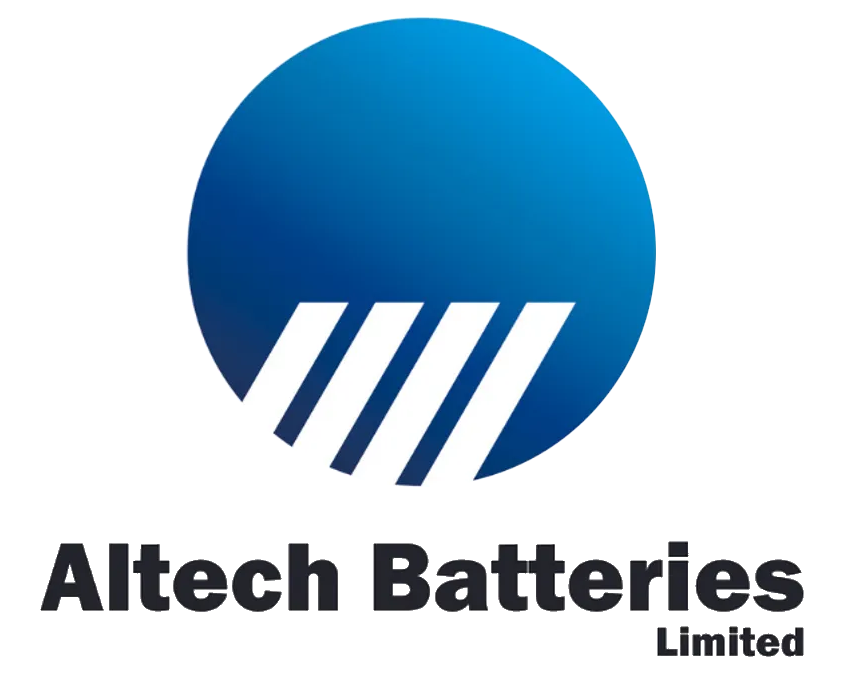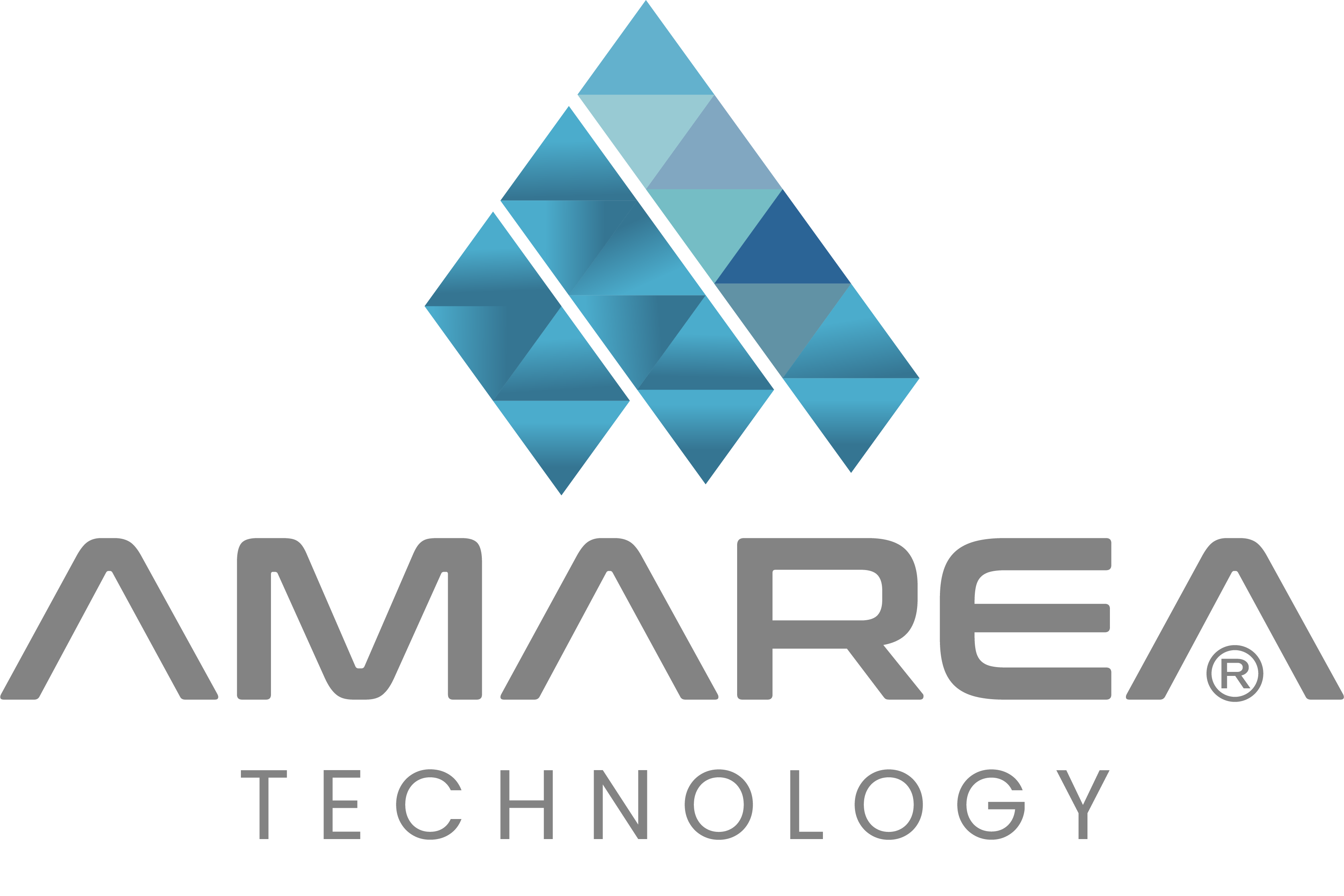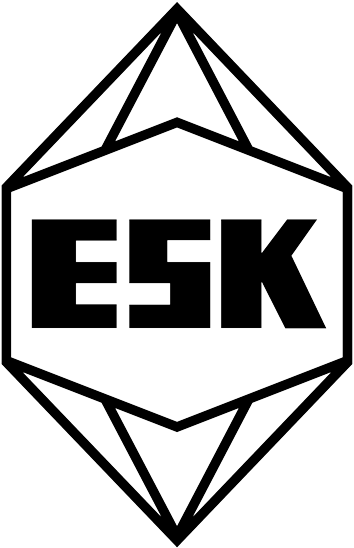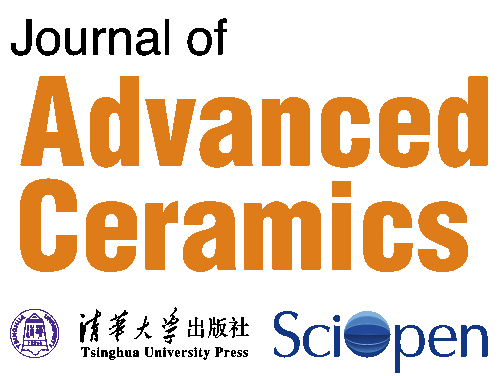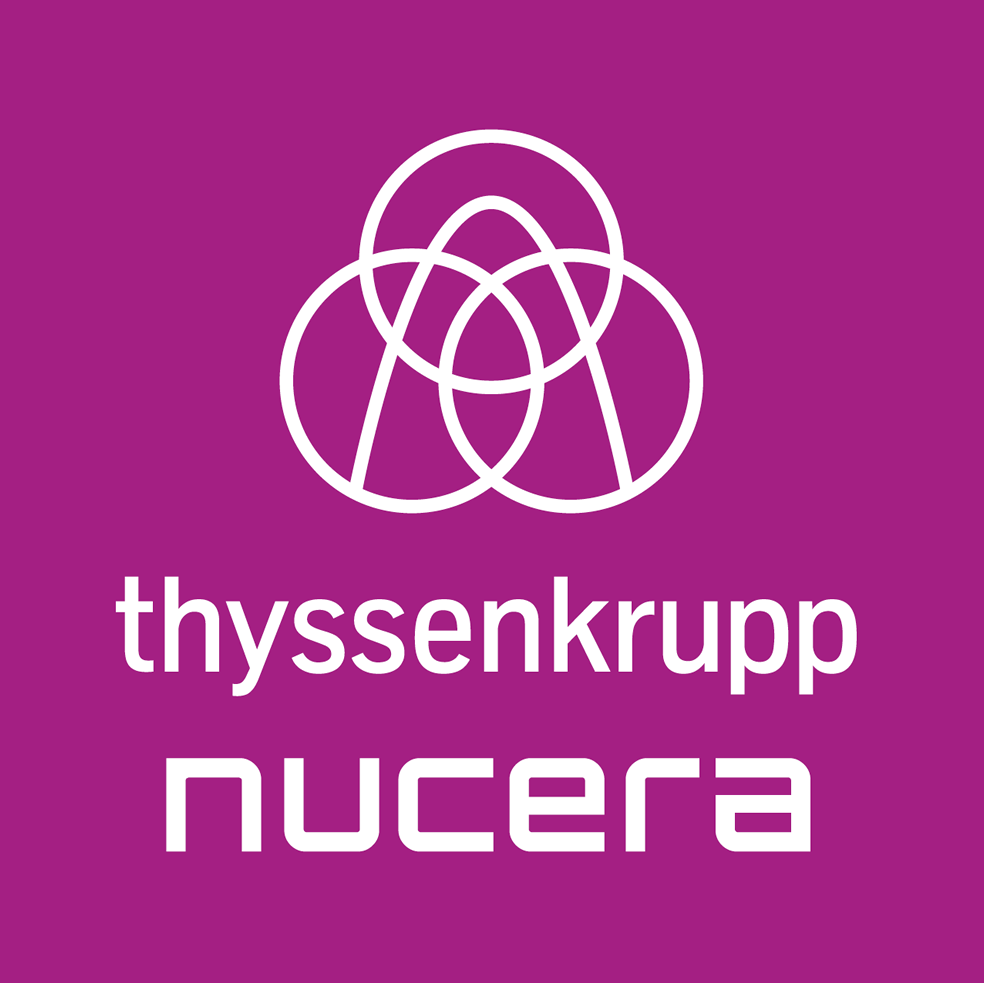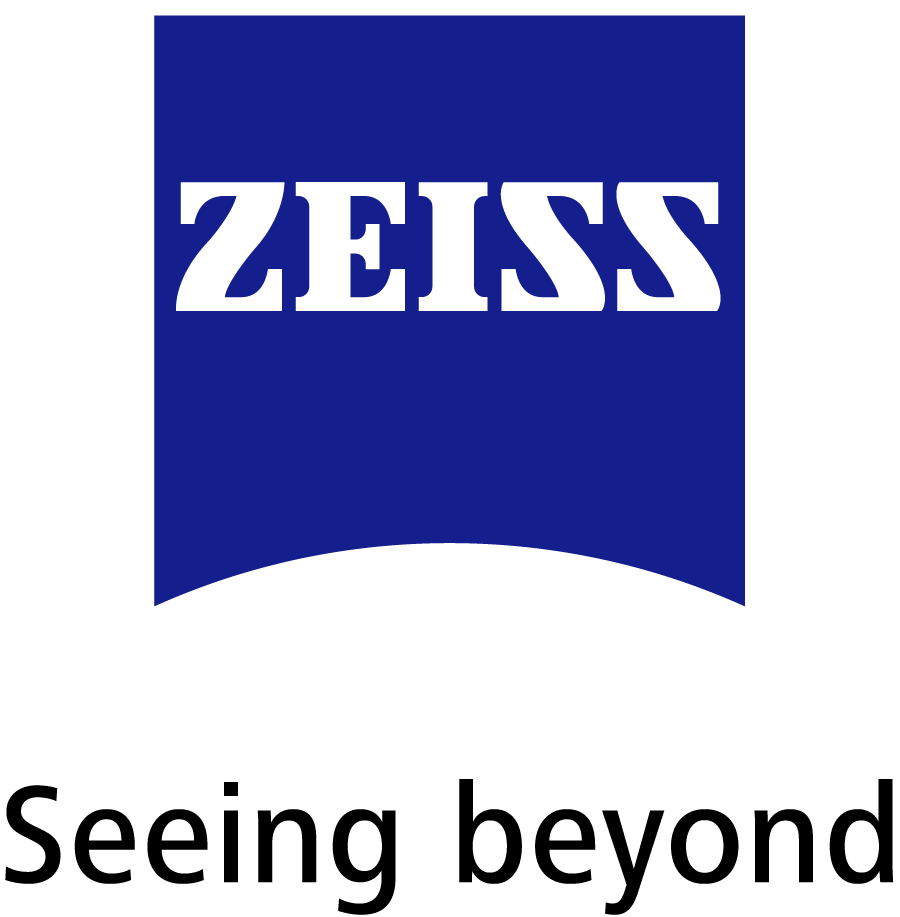Conference topics
- Symposium 1 (S1) Innovative ceramic syntheses, processing and shaping / Ceramic coatings / Porous ceramics
- Symposium 2 (S2) Thermal processes and advanced sintering / Cold sintering
- Symposium 3 (S3) Additive manufacturing
- Symposium 4 (S4) Advanced structural ceramics and composites / Architectured materials / Defense / Subsea systems
- Symposium 5 (S5) Refractories / High and ultra-high temperature ceramics / Hardmetals
- Symposium 6 (S6) Ceramics and sustainable development / Recycling
- Symposium 7 (S7) Glass-ceramics and glasses
- Symposium 8 (S8) Functional ceramics
- Symposium 9 (S9) Ceramics for energy conversion and storage, chemistry and environment / Hydrogen
- Symposium 10 (S10) (Bio)ceramics, composites and bioactive glasses for healthcare
- Symposium 11 (S11) Ceramics and inorganic materials for building applications / Silicate ceramics / Art + Archeology
- Symposium 12 (S12) Advanced characterization techniques
- Symposium 13 (S13) Modeling and digitalization of materials and processes
- Symposium 14 (S14) Ceramic membranes, water & solvent treatment and gas separation
- Symposium 15 (S15) Transparent ceramics
- Satellite Symposium 16 (S16) ACerS-ECerS Joint Symposium (invitation only)
- Satellite Symposium 17 (S17) International Sodium Battery Symposium SBS6
- Satellite Symposium 18 (S18) KCerS-ECerS Joint Symposium
- Satellite Workshop: Korea-Germany Research Synergy through GITCC Program and Program by KEIT
- Student Speech Contest (SSC)
S1) Innovative ceramic syntheses, processing and shaping / Ceramic coatings / Porous ceramics
Innovative synthesis routes and advanced powder processing and molding techniques are key to the successful production of reliable, high-performance ceramic components, whether they are dense or porous micro or macro devices of varying geometric complexity.
This symposium will focus on the whole processing chain of ceramic components including powder synthesis, pre-processing steps, e.g., granulation, feedstock or slurry preparation, filament drawing, etc., shaping methods, and subsequent debinding and sintering. Beside single-material parts, multi-material approaches for functionalization of components are welcome. The symposium will provide an international forum for academic and industrial researchers to discuss and exchange ideas.
A particular focus is on the understanding and application of innovative processes and sustainable technologies for the development of ceramic materials with new functionalities and/or structures, with special attention to the reduction of energy consumption and CO2 emissions, as well as the challenges involved and the experience gained.
Topics of interest include, but are not limited to, the following:
- Powder and precursor syntheses
- Preparation of granulates, feedstocks, suspensions, inks, pastes, and filaments
- Coating technologies
- Novel shaping methods: shaping of ceramic suspensions, pressing, plastic shaping, soft chemistry and sol-gel, gel casting, templating, temperature-induced forming, direct foaming
- Hybridization technologies (e.g. 2-component injection molding, multi component shaping)
- Advanced machining and precision finishing of ceramic components
- Process monitoring and control in preparation and shaping
- Multiscale modeling, numerical simulation and Artificial Intelligence/deep learning applied to the ceramic processing chain
Invited talksCekdar AHMETOGLU, Technische Universität Berlin, Germany Alexander KATZ DEMYANETZ, Technion - Israel Institute of Technology, Israel Andraž KOCJAN, Jožef Stefan Institute, Slovenia Rodrigo MORENO, Institute of Ceramics and Glass-CSIC, Spain |
Symposium chairs |
Symposium organizing committee |
| Andraz KOCJAN, Jožef Stefan Institute, Slovenia
Tassilo MORITZ, Fraunhofer IKTS, Germany Daniel SAFRANCIC, TECHNION, Israel |
Paolo COLOMBO, University of Padova, Italy
Begoña FERRARI, Instituto de Cerámica y Vidrio, CSIC, Spain Günter MOTZ, University of Bayreuth, Germany Michael STUER, EMPA, Switzerland Martin TRUNEC, CEITEC, Brno, Czech Republic Paula VILARINHO, University of Alveira, Portugal Zhaoju YU, Xiamen University, China |
S2) Thermal processes and advanced sintering / Cold sintering
The symposium will address the recent progress in the field of thermal processes and sintering of ceramic materials. Along with the broad range of experimental approaches, the emerging novel methods of the material densification such as Cold Sintering, Radiative Sintering, Blacklight Sintering, Laser Sintering will be covered. The Symposium will give a stage both to academic researchers to showcase the remarkable development in the fundamental understanding and modelling of these processes in relation to the tailored ceramic microstructure evolution as well as to the experts dealing with industrial applications of these techniques. The focus will be on the unveiling the potential of these approaches to designing multifunctional and complex materials with outstanding and unusual combination of properties. Furthermore, the reduction of manufacturing costs and energy consumption during these processes whilst actively impacting the carbon footprint will be discussed.
Topics
- Spark plasma sintering/Field-assisted sintering
- Flash sintering
- Cold sintering
- Microwave sintering
- Selective Heat Sintering (including laser sintering, radiative heating etc.)
- Ultrafast high-temperature sintering
- Reactive sintering
- Sintering mechanisms
- Modeling
- Tailored ceramic microstructures and properties (functionally graded, nanomaterials, composites…)
Invited talksKarel MACA, Brno University of Technology, Czechia Christopher MARVEL, Louisiana State University, USA Wolfgang RHEINHEIMER, University of Stuttgart, Germany Nuria VICENTE-AGUT & Antonio BARBA-JUAN, Jaume I University, Spain |
Symposium chairs |
Symposium organizing committee |
| Clive RANDALL, Penn State University, USA
Jan RÄTHEL, Fraunhofer IKTS, Germany Laura SILVESTRONI, Institute of Science & Technology - CNR, Italy |
Raúl BERMEJO, Montanuniversität Leoben, Austria
Rajendra BORDIA, Clemson University, USA Martin BRAM, Forschungszentrum Jülich GmbH, Germany Catherine ELISSALDE, ICMCB-CNRS, France Anne LERICHE, Polytechnical University Hauts-de-France, France Karel MACA, Brno University of Technology, Czech Republic Eugene OLEVSLY, San Diego State University, USA Andrey RAGULYA, I.M. Frantsevich Institute for Problems of Materials Science, National Academy of Sciences of Ukraine, Ukraine Michael REECE, Queen Mary University, UK Wolfgang RHEINHEIMER, Stuttgart University, Germany Richard TODD, University of Oxford, UK |
S3) Additive manufacturing
Additive manufacturing (AM) of ceramics, hardmetals, cermets and glass uses a wide variety of direct and indirect processes with dot-wise, line-wise or layer-wise deposition of material, some of which have already reached a productive level and are in industrial use. Granules, suspensions, filaments or feedstocks are often used as semi-finished products for the additive manufacturing processes, which are subject to special requirements in terms of processability and reproducibility. The current main objectives of development are primarily to achieve component properties of additively manufactured components at a level comparable to conventional molding methods, and to increase reliability and repeatability. Non-destructive in-line testing methods and surface finishing steps will be indispensable to achieve these goals in the future.
Contributions that address current progresses around Additive Manufacturing and hybridized processing technologies along the whole processing chain focusing on component design, AM building processes, debinding, consolidation/sintering, finishing post-treatments and characterization are welcome. Both experimental and numerical approaches can contribute to this symposium, emphasizing the current tremendous issue of the full digitalization of the design and entire fabrication chain of ceramics both at the academic and industrial levels.
Topics
- Materials design
- Numerical simulation
- Preparation of granulates, feedstocks, suspensions, inks, pastes, and filaments
- Dot-wise, line-wise, and layer-wise building techniques
- Direct and indirect AM methods
- Hybridization technologies
- Multi-material approaches
- Thermal post-processing (debinding, sintering)
- Artificial Intelligence / Machine learning / Deep learning
- Process monitoring and control
Invited talksSarah DIENER, Kyocera Fineceramics Europe GmbH, Germany Philipp GINGTER, Schunk Ingenieurkeramik GmbH, Germany Hui MEI, Northwestern Polytechnical University, China |
Symposium chairs |
Symposium organizing committee |
| Uwe SCHEITHAUER, Fraunhofer IKTS, Germany
Hui-Suk Yun, KIMS, South Korea Andrea ZOCCA, Bundesanstalt für Materialforschung und -prüfung (BAM), Germany |
Frank CLEMENS, EMPA, Switzerland
Tobias FEY, Friedrich-Alexander-University Erlangen-Nürnberg, Germany Giorgia FRANCHIN, University Padova, Italy Jens GÜNSTER, Bundesanstalt für Materialforschung und -prüfung (BAM), Germany Michael HALBIG, NASA Glenn Research Center, USA Soshu KIRIHARA, Osaka Univeristy, Japan Tanja LUBE, Montanuniversität Leoben, Austria Fabrice ROSSIGNOL, IRCER Limoges, France Martin SCHWENTENWEIN, Lithoz GmbH, Austria Chen ZHANGWEI, Shenzhen University, China |
S4) Advanced structural ceramics and composites / Architectured materials / Defense / Subsea systems
Advanced ceramics like ceramic-matrix composites, laminates and architectured porous ceramics are entering a new age, with a robust increase of their applications in aircraft propulsion, subsea systems, drive technology, thermal protection of space objects, heat exchange in energy conversion and heavy industry, nuclear applications, etc. Indeed, their outstanding performances turn them into the ”enabling materials” for highly demanding, though strategic applications under extreme conditions.
The increasing demand pushes not only the engineers to propose new materials designs, materials solutions and processes but also the scientific community to investigate breakthrough techniques related to their synthesis, multi-scale characterization, testing in a variety of conditions and to develop or apply state-of-the-art modelling techniques in order to better understand the relationships between processing, (micro-)structure and properties of these materials. This symposium welcomes all contributions addressing research and development on this class of amazing materials. It is aimed to present the user benefits of these materials linked to the different areas of application.
Topics
- Oxide/non-oxide structural ceramics
- Architectured ceramics, incl. porous ceramics and multi-material components
- Ceramic Matrix Composites, incl. ceramic laminates and fiber composites
- MAX phases and related compounds
- Manufacturing technologies
- Ceramics for civil safety and defense
- Superhard and wear resistance materials
- Ultra-high-temperature materials
- Testing techniques; diagnostics; structural characterization
- Mechanical, thermal and tribological properties; oxidation/corrosion resistance
- Microstructure/property/processing relationships
- Design
- Modeling, numerical simulation and Artificial Intelligence
Symposium chairs |
Symposium organizing committee |
| Michael ZINS, Fraunhofer IKTS, Germany
Pavol SAJGALIK, Slovak Academy of Science, Slovakia |
Michael CINIBULK, Air Force Research Lab, USA
William G. FAHRENHOLTZ, Missouri University of Science & Technology, USA Tobias FEY, Friedrich-Alexander-University Erlangen-Nürnberg, Germany Erkka FRANKBERG, Tampere University, Finland Emilio JIMENEZ-PIQUE, Universidad Politécnica de Cataluña, Spain Dietmar KOCH, University of Augsburg, Germany Alberto ORTONA, Italian Swiss Technical University (SUPSI), Switzerland Zbigniew PĘDZICH, AGH University of Science & Technology, Poland Pascal REYNAUD, CNRS, INSA Lyon, MaTEIS, France Antonio-Javier SANCHEZ-HERENCIA Vincenzo SGLAVO, University of Trento, Italy Gerard VIGNOLES, University of Bordeaux, CNRS, France Fei ZHANG, KU Leuven, Belgium |
S5) Refractories / High and ultra-high temperature ceramics / Hardmetals
Application in which requirement in terms of high mechanical and thermo-physical properties exist rely on advanced structural ceramics, ceramic metal (cermet) composites and refractories. Their resistance to high temperatures, chemical attack and other demanding conditions make them strategic materials for many industrial applications. Be it in material and energy production, automotive, aerospace or medical applications.
The symposium aims to bring together scientists from materials science and engineering for discussing the main challenges material development of high to ultra high temperature ceramics, cermets and refractories.
Topics will include approaches in medium to high entropy ceramics, synthesis of complex powders for production of monolithic and layered composites and coatings as well as materials suited for harsh and demanding environments.
Topics of interest include, but are not limited to, the following:
- HTC/UHTC: Medium and high entropy carbides, nitrites and carbonitrides
- Cermets: alternative binders, novel hard phases, interface design
- Refractories: raw materials, shaped and monolithic refractories
- Microstructural design
- Advanced processing and its relationship with microstructural development
- Synthesis of starting powders
- Mechanical properties and fractography
- Processing-microstructure-properties-performance in use relationships
- Thermo-physical and tribological behavior at room and high temperature
- Corrosion/ablation/oxidation testing and analysis
- Applications
Invited talksVictor Carlos PANDOLFELLI, Federal University of São Carlos, Brazil Suzana FILIPOVIĆ, Institute of Technical Sciences of SASA, Serbia |
Symposium chairs |
Symposium organizing committee |
| Christos ANEZIRIS, Technische Universität Bergakademie Freiberg, Germany
Johannes PÖTSCHKE, Fraunhofer IKTS, Germany |
Jon BINNER, University of Birmingham, UK
Tamás CSANÁDI, Slovak Academy of Sciences, Slovakia Emmanuel DE BILBAO, University of Orleans, France William G. FAHRENHOLTZ, Missouri University of Science & Technology, USA Dietmar GRUBER, Montanuniversität Leoben, Austria In-Ho JUNG, Seoul National University, South Korea Victor Carlos PANDOLFELLI, Federal University of São Carlos, Brazil Chris PARR, Imerys, France Jaques POIRIER, Université d’Orléans, France José Manuel SÁNCHEZ MORENO, University of Navarra, Spain Diletta SCITI, ISTSC, Italy Stefan SCHAFFÖNER, University of Bayreuth, Germany Xiaoyan SONG, Beijing University of Technology, China Thorsten Tonnesen, RWTH Aachen University, Germany |
S6) Ceramics for environmental technologies / Recycling
Ceramic parts and components derive the measure of their sustainability from several levels: on the one hand, their intrinsic durability, hardness, temperature resistance and chemical resistance guarantees sustainability per se compared to other material classes, because fewer parts must be manufactured for the specific purpose. In most cases, the effect of durability of ceramics far outweighs the energy requirements for their production which are sometimes high. This increasingly justifies recycling of ceramic materials and their raw materials. Furthermore, ceramics can be applied in various fields of application to replace quite critical raw materials (e.g., the substitution of precious metals by oxide materials in the field of catalysts). However, the essential greater influence on sustainable management is that ceramic components enable the application of certain modern technologies in the first place - not least for environmental protection and more sustainable production methods. Ceramic materials and components thus occupy a key position in the technology areas that are essential for the successful long-term transformation of industry towards a circular economy. This symposium will particularly focus on the latter aspect on “ceramics and sustainable development” and show examples of sustainable technological approaches that would hardly be feasible without the use of ceramics, be it in the chemical industry, the water and hydrogen economy, power storage, e-mobility, environmental technology, or other sectors.
Invited talksMatthias HAUSMANN, ESK-SIC GmbH, Germany Chiharu TOKORO, Waseda University, Japan |
Symposium chairs |
Symposium organizing committee |
| Burkhardt FASSAUER, Fraunhofer IKTS, Germany
Gisèle LECOMTE-NANA, IRCER, France Mareike PARTSCH, Fraunhofer IKTS, Germany Mrityunjay SINGH, Ohio Aerospace Institute, Cleveland, USA
|
Martin BERTAU, Fraunhofer IKTS, Germany
Mario EINAX, HYSON, Germany Traugott SCHEYTT, Technische Bergakademie Freiberg, Germany Anke WEIDENKAFF, TU Darmstadt, Germany Jürgen WIESE, IFF+FH Stendal, Germany |
S7) Glass-ceramics and glasses
In conjunction with the composition of glasses, structural changes that occur in glass melts are of fundamental importance for the boundary conditions that induce or prevent crystallization. An understanding of the interrelationships on a fundamental and application-oriented level provides the prerequisite for the specific adjustment of the properties of glasses and glass ceramics and their production. In the context of this symposium, we invite contributions from all who are interested in the fundamentals and applications where crystallization and its properties can lead to new functionalities. In view of the increasing relevance of glasses and glass ceramics in applications related to the generation, storage and conversion of energy and as well as additive manufacturing processes, contributions on their processing via the powder route represent a special focus. This symposium will address all studies linking melts to crystals, including modeling, processing, and metrology (especially those evaluating in situ behavior) of glass and glass-ceramic systems that enable unique microstructures and functions.
Topics
- Basic science, crystallization
- Link between structure, microstructure and properties (glass, glass-ceramics and glazes)
- New technologies and innovative processes, hot forming
- Sintering of glass ceramics
- Additive manufacturing and near net shaping
- Process monitoring and control
- Modelling, numerical simulation and Artificial Intelligence
- Applications and future developments (optics, fibers, laser, etc)
- Link between glass/melt and crystal
- What are the changes that occur in a liquid before the first crystal appears?
- Applications of bulk, thin film and fiber composites with engineered microstructures
Invited talksJoachim DEUBENER, Clausthal University of Technology, Germany Ina MITRA, SCHOTT AG, Germany Vincenzo M. SGLAVO, University of Trento, Italy |
Symposium chairs |
Symposium organizing committee |
| Jochen SCHILM, Fraunhofer IKTS, Germany
Federico SMEACETTO, Politecnico di Torino, Italy |
Enrico BERNARDO, University of Padova, Italy
Dušan GALUSEK, Alexander Dubček University of Trenčín, Slovakia Daniel NEUVILLE, USTV and CNRS-IPGP Paris, France Andreas PRANGE, RWTH Aachen, Germany Tanguy ROUXEL, University Rennes, France Theany TO, University Rennes, France Lothar WONDRACZEK, Friedrich-Schiller-Universität Jena, Germany |
S8) Functional ceramics
The symposium will offer an interdisciplinary meeting point for scientists from academia, institutes for applied research and industry to present and discuss the state-of-the-art, and developments in the broad field of functional ceramics. Besides new fundamental insights, the development of advanced functional ceramics and composites with improved, new or tailored properties relies on emerging processing routes that open new application perspectives, significant energy-savings, or the avoidance of hazardous or rare raw materials. The aim of the symposium is also to highlight advances in the understanding of structure/microstructure/properties relationships.
In addition to material development, the symposium will address technologies of shaping functional ceramic materials, in particular aspects of layer deposition in thick-film and multilayer technology.
Topics
- Dielectrics (high K, microwave, high-temperature applications)
- Ferroics (ferroelectrics, antiferroelectrics, relaxor ferroelectrics, multiferroics)
- Magnetic materials
- Thermoelectrics
- Ionic, electronic and mixed conductors, defect chemistry and transport
- Lead-free piezoelectric ceramics (from composition and other critical elements to devices, i.e., electromechanical sensors and actuators, energy harvesting …)
- Caloric materials and applications, cooling technologies
- Modeling, simulation and in situ characterization techniques
- Composite materials (for new/tailored functionalities)
Invited talksSakyo HIROSE, Murata Manufacturing Co., Ltd., Japan Jörg TÖPFER, Ernst-Abbe-Hochschule Jena, Germany |
Symposium chairs |
Symposium organizing committee |
| Barbara MALIČ, Jožef Stefan Institute, Slovenia
Holger NEUBERT, Fraunhofer IKTS, Germany |
Kaline P. FURLAN, Hamburg University of Technology, Germany
Sophie GUILLEMET-FRITSCH, Paul Sabatier University - Toulouse III, France Jurij KORUZA, Technical University Graz, Austria Pascal MARCHET, University of Limoges, France Robert PULLAR, University of Venice, Italy Jürgen RÖDEL, Technical University of Darmstadt, Germany Jörg TÖPFER, Ernst-Abbe-Hochschule Jena, Germany Kyle G. WEBBER, University of Erlangen-Nürnberg, Germany |
S9) Ceramics for energy conversion and storage, chemistry and environment / Hydrogen
The transformation of the energy system towards conversion and storage of renewable energy and green molecules-based economy is in progress. Due to their unique properties, ceramic materials have great potential to resolve the challenges of this energy transition. The symposium will cover ceramic materials and components for applications in:
- Electrochemical energy conversion (materials and components in electrolyzers and fuel cells)
- Electrochemical energy storage (materials and components in batteries)
- Power generation (high-temperature coatings and ceramic matrix composites for gas turbines, materials and components for nuclear fission and fusion reactors and nuclear waste confinement, materials and components for heat storage and exchange, materials and components for solar absorbers)
- Energy harvesting (materials and components for thermoelectrics, photovoltaics, solar fuels/artificial photosynthesis)
- Hydrogen production from different feedstocks (waste, biomass etc.)
- Hydrogen storage and CO2 capture
- Hydrogen conversion to chemicals and fuels (incl. process design)
- Electrochemical applications (ionic/proton and electronic conducting dense or porous membranes for gas separation, catalytic membrane reactors)
Contributions to the symposium S9 should address at least one of the following topics:
- Ceramic-containing electrocatalysts, electrodes, electrolytes, seals, cells, interconnects, protective and contacting layers for electrolysis and fuel cell stacks as well as technology for their manufacturing
- Ceramic-containing electrodes, electrolytes, coatings for batteries and supercapacitors as well as technology for their manufacturing
- Ceramic-containing materials, coatings and components for power generation by gas turbines and combustion processes utilizing hydrogen, hydrocarbons, or ammonia as fuel
- Ceramics for nuclear fission and fusion and materials and sealants for nuclear waste confinement
- Ceramic-containing electrodes and coatings for photovoltaics / photocatalysis as well as technology for their manufacturing
- Ceramic materials and components for concentrated solar power as well as technology for their manufacturing
- Thermoelectric ceramic materials and components based thereof as well as technology for their manufacturing
- Ceramic materials and components for hydrogen production by thermo-chemical conversion
- Ceramic-containing catalysts and components for chemical conversion (PtX, reforming, ammonia, cracking, membrane reactors…)
- Ceramic-containing materials and components for hydrogen storage technologies
Invited talksFabienne AUDUBERT, CEA, France Matthias BOLTZE, new enerday GmbH, Germany Ryoji FUNAHASHI, AIST, Japan Hazel GARDNER, UKAEA, UK Christoph HARTNIG, AMG Lithium, Germany John IRVINE, University of St Andrews, UK Olivier JOUBERT, Nantes University, France Wolff-Ragnar KIEBACH, Technical University of Denmark (DTU), Denmark Kostiantyn KRAVCHYK, EMPA, Switzerland Kang Taek LEE, KAIST, South Korea Julia LEYS, Karlsruhe Institute of Technology (KIT), Germany Eric LOURADOUR, 3DCeram, France Norbert MENZLER, Forschungszentrum Jülich GmbH, Germany Ria MITCHELL, Carl Zeiss Microscopy, UK Dario MONTINARO, SolydEra SpA, Italy Takao MORI, NIMS, Japan Kornelius NIELSCH, Leibniz IFW Dresden, Germany Michiro OHTA, AIST, Japan Tae Ho SHIN, Korea Institute of Ceramic Engineering and Technology, South Korea |
Symposium chairs |
Symposium organizing committee |
| Olivier GUILLON, Forschungszentrum Jülich GmbH, Germany
John HARDY, Pacific Northwest National Laboratory, USA Mihails KUSNEZOFF, Fraunhofer IKTS, Germany Balaya PALANI, National University of Singapore |
Edith BUCHER, Montanuniversität Leoben, Austria
Jakup KUPECKI, Institute of Power Engineering - National Research Institute, Poland Enn LUST, University of Tartu, Estonia Eckart MÜLLER, DLR, Germany Alejandra VAREZ, Universidad Carlos III de Madrid (UC3M), Spain Robert VAßEN, Forschungszentrum Jülich GmbH, Germany |
S10) (Bio)ceramics, composites, and bioactive glasses for healthcare
The requirements for materials, processes, and parts related to healthcare have increased dramatically in recent years. This is driven on the one hand by the expectations of society and patients and on the other hand by newly developed manufacturing processes, new regulations, and better scientific understanding of the interactions between materials in vivo. Multidisciplinary research in the field of ceramics and glasses has a synergic effect proven by rapid developments of related areas, e.g., tissue engineering, nanotechnology, drug delivery, sensors, smart materials, and structures. The symposium will cover ceramic- and glass-based materials which are relevant for various healthcare sectors. Particular attention is given to implants, substitutes, protein-, cell- and tissue-interaction with ceramics and glasses, medical applications, and personalized therapies. Material systems of interest are, classical and new ceramic implant materials, innovative nanoparticles, bioactive ceramics, as well as new concepts and approaches for the design and production of 3D biomimetic devices. Thus, this symposium will seek to bring together researchers from academia, medical device manufacturers, and clinicians, to provide a comprehensive view on the topics of interest, which include, but are not limited to, the following:
- Ceramics in nanomedicine and in biotechnology
- Biological interactions
- Medical, pharmaceutical (drug delivery), and biotechnological applications
- Dental and orthopedic ceramics
- Bioactive ceramics and glasses for tissue engineering
- Bone replacement, regeneration, and reconstruction
- Modeling, numerical simulation and Artificial Intelligence for development and design
- Mechanical and biological testing and characterization
- Processes for 3D bioceramic and -glasses fabrication
Invited talksJanis LOCS, Riga Technical University, Latvia Franziska SCHMIDT, Charité Universitätsmedizin Berlin, Germany |
Symposium chairs |
Symposium organizing committee |
| Aldo BOCCACCINI, University of Erlangen-Nuremberg, Institute of Biomaterials, Germany
Marc BOHNER, RMS Foundation Switzerland Jörg OPITZ, Fraunhofer IKTS, Germany |
Mikhael BECHELANY, Institut Européen des Membranes (IEMM, ENSCM UM CNRS UMR5635), France
Annabel BRAEMS, KU Leuven, Belgium Jérôme CHEVALIER, Lyon, France Anton FICAI, University POLITEHNICA of Bucharest, Romania Kaline P. FURLAN, Hamburg University of Technology, Germany Michael GELINSKY, TU Dresden, Germany Jakob SCHWIEDRZIK, EMPA, Switzerland Linus STEGBAUER, TU Bergakademie Freiberg, Germany Juliane SPOHN, Fraunhofer IKTS, Germany, Germany |
S11) Ceramics and construction materials for building applications / Silicate ceramics / Art + Archeology
The rapid development of modern societies is based on the availability of new materials with specific features. The building sector is responsible for 39 % of global carbon dioxide (CO2) emissions, with concrete alone accounting for 11 % of global CO2 emissions and thus, significantly contributing to climate change. Due to population growth and progressing urbanization, global demand for concrete will increase by up to 23 % by 2050. To limit further global warming a significant reduction of CO2 emissions is required. Therefore, new innovative approaches are needed that enable also the (re)use of existing materials.
To this aim, this symposium focuses on new ceramics, inorganic materials and novel biogenic approaches that are using novel eco-friendly processes, raw materials derived from by-products of other industrial processes or, microorganisms and living materials that bind CO2, to achieve novel building applications.
With new materials and new processes follows the adaption of shaping techniques either conventional like casting and foaming processes or 3D printing. Together with innovative materials they can help saving resources and thus increase the sustainability of novel construction materials. Within the aim of sustainability, end of life scenario has also to be considered, thus recycling of all materials has to be investigated.
On behalf of the Co-organizers, it is our great pleasure to invite all scientists, colleagues, young researchers, business delegates, students and anybody interested in innovative ceramics and inorganic construction materials to attend this symposium.
Topics
- Ceramics
- Inorganic materials
- Inorganic binders and cements
- Innovative green synthesis
- Living Building Materials
- New raw materials
- Recycling of by-products
- Innovative shaping processes
- Durability
- Life cycle assessment
Invited talksJean-Marc TULLIANI, DISAT Politecnico di Torino, Italy |
Symposium chairs |
Symposium organizing committee |
| Matthias AHLHELM, Fraunhofer IKTS, Germany
Uwe REICHEL |
Thora H. Arnardottir, Newcastle University, UK
Angelika PRIESE, Imerys Murg GmbH, Germany Jean-Marc TULLIANI, DISAT Politecnico di Torino, Italy |
S12) Advanced characterization techniques
The characterization of the microstructure is the cornerstone of material evaluation. It is required to enable material development, optimization, and quality inspection. And it’s especially critical in case of ceramic materials. In addition to characterization of the microstructures, the symposium will address all other characterization methods such as mechanical, thermomechanical and thermal methods.
While classic characterization still covers a very important role, requests are made to expand the capabilities of established methods to new frontiers (to high temperatures or high pressure, faster in situ or operando measurements etc.). Simultaneously, the development of new tools is discussed.
Among those, one can count special microscopy techniques, combined methods (including in-situ and even online during production), 3D imaging techniques, time resolved measurements and characterization at large scale facilities (neutron and synchrotron radiation sources).
All these allow nowadays pushing the investigations to fantastic spatial and temporal resolutions, under environmental conditions (temperature, pressure, load, reactive atmosphere etc.) simply unreachable a few decades ago.
This symposium aims at sparking the discussion among the ceramic community on:
- The needs of the community in terms of advanced characterization tools
- The state-of-the-art of such tools and potential gaps existing
- The possible application of methods that are not commonly used in the ceramic community
- The use of characterization for materials development quality control
Contributions on all the above-mentioned aspects are welcome to initiate vibrant discussions: what do we need to develop and push beyond the current envelope? How do we couple advanced characterization methods with the build-up of new ceramic materials exhibiting enhanced or even new properties?
What are the limits of the existing inspection methods and how can we push them? Can the development of the new characterization methods keep up with the development of new ceramic materials? What are the critical production stages, where implementation of quality control tool would benefit the most? How will we approach the analysis and correlation of Big Data?
Topics
- Advances in established methods like electron microscopy including sample preparation
- X-ray and neutron scattering, diffraction and absorption methods under external constraints (stress, temperature, pressure etc.)
- In situ or operando methods
- New characterization tools for the development of new ceramic materials
- Laser, Light or X-ray based spectroscopy advanced methods (Raman, Infrared spectroscopy, OCT, EXAFS and XANES etc.)
- Spatial or temporal high resolution approaches
- Advanced methods for the characterization of electrical or magnetic properties of ceramics
- From the lab to the industry. Advanced on-line methods for the characterization of ceramics during their elaboration processes
Invited talksJérôme CHEVALIER, INSA Lyon, France Peter SUPANCIC, Montanuniversität Leoben, Austria |
Symposium chairs |
Symposium organizing committee |
| Tanja LUBE, Montanuniversität Leoben, Austria
Björn MATTHEY, Fraunhofer IKTS, Germany Jingyang WANG, Institute for Metal Research, Academy of Science, China |
Ján DUSZA, Centre for Advanced Materials and Technologies - PROMATECH, Slovakia
René GUINEBRETIÈRE, IRCER Limoges, France Junichi TATAMI, Yokohama National University, Japan |
S13) Modeling and digitalization of materials and processes
Material science is currently experiencing rapid development and enormous opportunities through the advances in digital methods related to, e.g., simulations, systematic analysis of large datasets and machine learning. Publicly available material data bases together with data-driven techniques or machine learning as well as first-principles computations and experimental measurements accelerate the discovery and design of new advanced ceramic materials. Due to the universality of machine learning methods, the effects of this development and paradigm change are not yet foreseeable. In the context of data-based methods, questions arise about suitable data structures for material, process and application data in the entire life cycle of ceramic materials. The aim of the symposium is to share advances, exchange ideas and discuss results in this methodological field.
Topics
- Physical modeling and simulation of ceramic manufacturing processes
- Multiscale modeling and simulation of ceramic materials and components
- Data driven material search and design of functional and structural ceramics
- Machine learning studies concerning relationships between structure, technology and properties of ceramics
- Ontologies and data bases of ceramic materials and technologies
Symposium chairs |
Symposium organizing committee |
| Adham HASHIBON, University College London, UK
Christian WUNDERLICH, Fraunhofer IKTS, Germany |
Emanuele GHEDINI, University of Bologna, Italy
Gerhard GOLDBECK, EMMC, Belgium Payam KAGHAZCHI, Forschungszentrum Jülich GmbH, Germany |
S14) Ceramic membranes, water & solvent treatment and gas separation
Ceramic membranes are well established in liquid filtration playing an important role in the purification of water and organic solvents. In competition with polymer membranes, the main advantages are higher resistance to aggressive media and a longer service life. Current trends in chemical engineering, energy and environmental technology and climate protection require gas separation, water/solvent purification, pervaporation and vapor permeation membranes with high permselectivity, temperature stability and mechanical strength. Particularly promising but not the only applications are H2, CO2, CH4, O2, H2O separations. The symposium will highlight new results in membrane fabrication in order to increase permeability and flux, improve retention and selectivity, to reduce manufacturing costs and to meet new applications.
Papers on the following topics are welcome:
- Ceramic supports (tubes, flat membranes, capillaries, hollow fibres)
- Membrane coating (slurry, sol-gel, CVD, PVD)
- Membrane materials (oxides, non-oxides, zeolites, MOFs, palladium, carbon, mixed conductors)
- Grafting
- Catalytic membranes, membrane reactors
- Membrane contactors
- Membrane application
- Membrane characterization
Invited talksZakarya CHAFIQ ELIDRISSI, Lorraine University, France Jonas HEDLUND, Luleå University of Technology, Sweden Wilhelm A. MEULENBERG, Forschungszentrum Jülich GmbH, Germany Harpreet SONDHI, University of Twente, Netherlands In-Hyuck SONG, Korea Institute of Materials Science, South Korea Tim VAN GESTEL, Forschungszentrum Jülich GmbH, Germany Ingolf VOIGT, Fraunhofer IKTS, Germany |
Symposium chairs |
Symposium organizing committee |
| Ingolf VOIGT, Fraunhofer IKTS, Germany
Louis WINNUBST, University of Twente, The Netherlands |
Anita BUECKENHOUDT, VITO, Belgium
Francesca DRAGO, RSE S.p.A, Milano, Italy Marie-Laure FONTAINE, SINTEF, Oslo, Norway Christian GÖBBERT, Nanostone Water GmbH, Germany Anne JULBE, University of Montpellier, France Wilhelm MEULENBERG, Forschungszentrum Jülich GmbH, Germany Volker PREHN, Rauschert Kloster Veilsdorf GmbH, Germany José SERRA, Instituto de Tecnología Química (ITQ), Valencia, Spain |
S15) Transparent ceramics
Transparent ceramics are characterized by excellent material properties and are superior in comparison to glass or sapphire. Due to transmittance in a multispectral range from ultraviolet to infrared, transparent ceramics are promising materials for a wide range of applications such as optics, photonics, laser technology, scintillator, armor protection and optoelectronic devices. To achieve the required transparency and microstructures it is essential to study all aspects in terms of powder processing, use of different thermal steps, selection of shaping method and characterization e.g. quality control. Both conventional ceramic technology and new innovative technologies such as liquid or plastic shaping, special thermal processes and finishing steps will be addressed.
The symposium deals with all new developments in the field of transparent ceramics with passive properties and active – light absorption, light scattering and light conversion – properties related to doping. Other topics include functional coating, bonding or laminating to achieve better component performance.
Topics
- Ceramics for photonics
- Transparent ceramics (passive)
- Protective components for optical systems and sensors in harsh conditions (subsea sensor technology, lidar sensors)
- Biocompatible and biostable optics for diagnostics
- Transparent ceramics (active) like phosphors, scintillators, Q-switches and laser gain-media
- Functionalization of transparent ceramics, doping
- Innovative technology, shaping and processing, bonding, coating
Invited talksRemy BOULESTEIX, Université de Limoges, France Maxim SOKOL, Tel Aviv University, Israel Yiquan WU, Alfred University, USA |
Symposium chairs |
Symposium organizing committee |
| Sabine BEGAND, Fraunhofer IKTS, Germany
Laurent GREMILLARD, INSA Lyon, France
|
Marc DUMERAC, Technische Universität Darmstadt, Germany
Laura ESPOSITO, Consiglio Nazionale delle Ricerche, ISSNC, CNR, Faenza, Italy Shmulik HAYUN, Ben Gurion University, Israel Frank A. MÜLLER, Friedrich-Schiller-Universität Jena, Germany Jan WERNER, Forschungsinstitut für Glas - Keramik GmbH, Germany |
S16) ECerS-ACerS Joint Symposium: Emerging leaders in advanced shaping of ceramics and environmental technologies
This joint ECerS-ACerS symposium manifests the importance of international dialogue for scientific progress and professional growth in ceramic science and engineering. Organized by two world-leading ceramic societies, the objective of this transatlantic joint symposium is to strengthen global collaboration and provide a forum for establishing professional networks. The invitation only symposium will feature emerging, mid-career scientific and technological leaders in ceramics. The symposium will highlight recent developments with a dedicated focus on two major topics in ceramics, namely advanced ceramics shaping technologies and new materials developments in ceramics for environmental technologies.
Symposium chairs |
Symposium organizing committee |
| Thomas GRAULE, President of ECerS, Belgium
Rajendra BORDIA, Materials Science and Engineering, Clemson University, USA
|
Francis CAMBIER, Belgian Ceramic Research Centre, Belgium
Monica FERRARIS, Politecnico di Torino, Italy Richard TODD, University of Oxford, United Kingdom |
S17) International Sodium Battery Symposium SBS6
Sodium batteries represent the most promising and short-term available post-lithium battery technology family. This family has members spanning generations, some of whom have over 40 years of history and have been commercialized and others who are being developed in the field of basic research. The variety of technological options is enormous and opens up a range of promising new possibilities for sustainable electricity storage.
The Sodium battery Symposium – SBS is the conference for scientific exchange on sodium batteries in Europe and looks back on a six-year tradition with alternating organization by Fraunhofer IKTS and the research group of Prof. Philipp Adelhelm (Helmholtz-Zentrum Berlin – HZB). While SBS5 is hosted by HZB, SBS6 will be organized as a satellite meeting of the ECerS XIX by Fraunhofer IKTS.
The SBS6 will cover all aspects of Na-based batteries, from fundamental research up to systems, along with testing, markets and applications. The SBS6 wants to strengthen the community around sodium batteries and intends to enable an open exchange of information on current scientific results, research interests, as well as market requirements. Scientists, engineers and managers are invited to report on their results, developments and future prospects orally or via posters, or display their products and services as an exhibitor. This 6th SBS welcomes contributions on recent trends and discoveries on:
- Sodium batteries and systems – experiences from R&D to real-world applications
- Innovative sodium battery cell concepts including
- Liquid and polymer electrolyte cell concepts
- Solid state and all solid state concepts
- High temperature sodium cells (Na-MeCl2, NaS)
- Flow, all liquid and alternative cell concepts
- Electrolytes and electrodes – material, design and production
- Anode and cathode materials – from material science to production processes
More information regarding the abstract submission can be found on the SBS6 website.
Symposium chairsMihails KUSNEZOFF, Fraunhofer IKTS, Germany Matthias SCHULZ, Fraunhofer IKTS, Germany Michael STELTER, Fraunhofer IKTS, Germany |
S18) KCerS-ECerS Joint Symposium
This three-day symposium aims to deepen the collaboration between South Korea and Europe in Ceramic Science and Technology by providing a unique platform for exchanging insights on the latest strategic focus areas and technological advancements. Designed to engage experts from academia and industry alike, the event fosters meaningful dialogue and innovation.
In addition, a one-day focus session will provide a platform for invited KCerS (Korean Ceramic Society) and ECerS students, to present their work and exchange ideas, nurturing the next generation of talent in the field of Ceramics in Energy Applications.
Contributions circling aorund the following topics are invited:
- Strategic advancements in Ceramic Science and Technology
- Cutting-edge semiconductor research and development
- Insights from academic and industrial collaborations between South Korea and Europe
- Opportunities for expanded cooperation and student exchanges
This symposium offers a unique opportunity to explore the intersection of academic research, industrial applications, and global collaboration in advancing Ceramic Science and Technology. It also highlights the significant role of the German-Korean cooperation as a driver of innovation and cooperation, paving the way for stronger global partnerships in ceramics, batteries, and semiconductors.
Symposium chairs |
|
|
HaeJin HWANG, President of KCerS, Republic of Korea Caroline Sunyong LEE, Hanyang University, Republic of Korea (One-day focus session of ECerS-KCerS Joint Symposium) Thomas GRAULE, President of ECerS, Belgium (One-day focus session of ECerS-KCerS Joint Symposium) Richard TODD, University of Oxford, United Kingdom Francis CAMBIER, Belgian Ceramic Research Centre, Belgium Alexander MICHAELIS, Fraunhofer IKTS, Germany |
|
Korea-Germany Research Synergy through GITCC Program and Program by KEIT
As part of the ECerS Satellite Program, this special one-day workshop is designed to promote and deepen collaborative research projects between Korea and Fraunhofer institutes in Germany. It offers a unique opportunity to enhance bilateral cooperation by sharing insights into ongoing initiatives and identifying pathways for future joint ventures.
The event is organized in connection with the Korea-Europe cooperation efforts under the Global Industrial Technology Cooperation Center (GITCC) program, led by South Korea’s Ministry of Trade, Industry, and Energy (MOTIE) and managed by the Korea Institute for Advancement of Technology (KIAT). Additionally, the workshop will highlight research projects carried out under the ceramic R&D programs managed by the Korea Evaluation Institute of Industrial Technology (KEIT).
The workshop will consist of two main sessions:
- Showcase of Projects Selected under the 2024 GITCC Program
This session will feature presentations on key collaborative projects currently underway as part of the GITCC 2024 program, offering insight into their objectives, progress, and outcomes. - Introduction of Projects Emerging from KEIT-led Ceramic Research Programs
This session will focus on research initiatives derived from KEIT’s ceramic R&D programs, presenting their results and exploring opportunities for future Korea-Germany cooperation in advanced materials and related technologies.
By bringing together researchers from Fraunhofer institutes, Korean research institutes, and industry, the event aims to serve as a platform for knowledge exchange and new collaboration opportunities in various technology areas.
Abstracts for this workshop can be send to k-fast@fraunhofer.de by May 16, 2025. Please use the Abstract Template.
Symposium chairs |
|
| Tae-Young HAN, Fraunhofer IKTS, Germany
Songhak YOON, Fraunhofer IWKS, Germany Yohan KIM, Fraunhofer IAP, Germany Sangwook LEE, Fraunhofer IPT, Germany Thomas HAERTLING, Fraunhofer IKTS, Germany |
|
SSC) Student Speech Contest
The student speech contest at the biennial ECerS conference is an event, an independent symposium of the conference, where young ceramist research students, representing each of the ECerS member countries, will give an oral presentation presenting their research achievements that is evaluated by a jury.
The presentation duration will be 15 minutes, followed by questions from the jury and the audience.
- Each member country of ECerS can send one (PhD, MSc, BSc) research student as the candidate of their country for the ECerS student speech contest.
- The oral presentation at the contest should be based on research work that the candidate has performed himself/herself at a research institution in the country he/she is representing.
- Graduate representatives must be within their first five years of full-time research at the time of the speech.
- If the representative is a PhD student, the candidate can participate in the competition if he/she defends (or will defend) his/her thesis after September 1, 2024.
- The candidate is granted a free registration for attending ECerS XIX
- The national ceramic societies are requested to pay the costs for travelling of their candidate student. If some societies are facing any difficulty for paying for the travelling of their candidate student, individual requests can be addressed to the ECerS secretariat asking for support.
- Accommodation will be provided by the conference organizers with the support of the JECS Trust.
- The national society will inform the ECerS Young Ceramists and Training working group as well as the conference organizers not later than May 31, 2025 who will be the representative of their country.
Once the national societies inform about their candidates, the conference organizers will contact the candidate to give instructions about abstract submission, registration and lodging. Please note that the candidates will be asked to register individually to the conference through the conference registration system.

